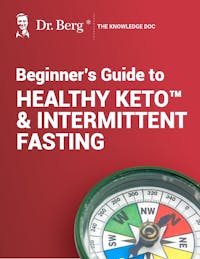How to Really Become Fat Adapted

Keto vs. Non-Keto
Quickly compare keto-friendly foods with non-keto options for easy reference
Use this wallet card to make informed food choices while shopping or dining out
Identify fake keto foods and ingredients that you should avoid
Simplify decision-making with clear, practical guidelines

Keto vs. Non-Keto
Quickly compare keto-friendly foods with non-keto options for easy reference
Use this wallet card to make informed food choices while shopping or dining out
Identify fake keto foods and ingredients that you should avoid
Simplify decision-making with clear, practical guidelines

Keto vs. Non-Keto
Quickly compare keto-friendly foods with non-keto options for easy reference
Use this wallet card to make informed food choices while shopping or dining out
Identify fake keto foods and ingredients that you should avoid
Simplify decision-making with clear, practical guidelines

Keto vs. Non-Keto
Quickly compare keto-friendly foods with non-keto options for easy reference
Use this wallet card to make informed food choices while shopping or dining out
Identify fake keto foods and ingredients that you should avoid
Simplify decision-making with clear, practical guidelines

Keto vs. Non-Keto
Quickly compare keto-friendly foods with non-keto options for easy reference
Use this wallet card to make informed food choices while shopping or dining out
Identify fake keto foods and ingredients that you should avoid
Simplify decision-making with clear, practical guidelines

Keto vs. Non-Keto
Quickly compare keto-friendly foods with non-keto options for easy reference
Use this wallet card to make informed food choices while shopping or dining out
Identify fake keto foods and ingredients that you should avoid
Simplify decision-making with clear, practical guidelines

Keto vs. Non-Keto
Quickly compare keto-friendly foods with non-keto options for easy reference
Use this wallet card to make informed food choices while shopping or dining out
Identify fake keto foods and ingredients that you should avoid
Simplify decision-making with clear, practical guidelines

Keto vs. Non-Keto
Quickly compare keto-friendly foods with non-keto options for easy reference
Use this wallet card to make informed food choices while shopping or dining out
Identify fake keto foods and ingredients that you should avoid
Simplify decision-making with clear, practical guidelines

Beginner’s Guide to Healthy Keto & Intermittent Fasting
Receive a step-by-step guide to starting Healthy Keto® and intermittent fasting
Learn about foundational principles and best practices for beginners
Get detailed visual guidance on portion sizes and meal composition
Discover how to set achievable goals and monitor your progress
Find practical tips for overcoming common challenges and staying motivated

Beginner’s Guide to Healthy Keto & Intermittent Fasting
Receive a step-by-step guide to starting Healthy Keto® and intermittent fasting
Learn about foundational principles and best practices for beginners
Get detailed visual guidance on portion sizes and meal composition
Discover how to set achievable goals and monitor your progress
Find practical tips for overcoming common challenges and staying motivated

Beginner’s Guide to Healthy Keto & Intermittent Fasting
Receive a step-by-step guide to starting Healthy Keto® and intermittent fasting
Learn about foundational principles and best practices for beginners
Get detailed visual guidance on portion sizes and meal composition
Discover how to set achievable goals and monitor your progress
Find practical tips for overcoming common challenges and staying motivated

Beginner’s Guide to Healthy Keto & Intermittent Fasting
Receive a step-by-step guide to starting Healthy Keto® and intermittent fasting
Learn about foundational principles and best practices for beginners
Get detailed visual guidance on portion sizes and meal composition
Discover how to set achievable goals and monitor your progress
Find practical tips for overcoming common challenges and staying motivated

Beginner’s Guide to Healthy Keto & Intermittent Fasting
Receive a step-by-step guide to starting Healthy Keto® and intermittent fasting
Learn about foundational principles and best practices for beginners
Get detailed visual guidance on portion sizes and meal composition
Discover how to set achievable goals and monitor your progress
Find practical tips for overcoming common challenges and staying motivated

Beginner’s Guide to Healthy Keto & Intermittent Fasting
Receive a step-by-step guide to starting Healthy Keto® and intermittent fasting
Learn about foundational principles and best practices for beginners
Get detailed visual guidance on portion sizes and meal composition
Discover how to set achievable goals and monitor your progress
Find practical tips for overcoming common challenges and staying motivated

Beginner’s Guide to Healthy Keto & Intermittent Fasting
Receive a step-by-step guide to starting Healthy Keto® and intermittent fasting
Learn about foundational principles and best practices for beginners
Get detailed visual guidance on portion sizes and meal composition
Discover how to set achievable goals and monitor your progress
Find practical tips for overcoming common challenges and staying motivated

Beginner’s Guide to Healthy Keto & Intermittent Fasting
Receive a step-by-step guide to starting Healthy Keto® and intermittent fasting
Learn about foundational principles and best practices for beginners
Get detailed visual guidance on portion sizes and meal composition
Discover how to set achievable goals and monitor your progress
Find practical tips for overcoming common challenges and staying motivated
Are you ready to become fat-adapted on the keto diet? Achieving this metabolic state can unlock efficient weight loss, provide stable energy levels, and improve overall health. It's a powerful tool in the ketogenic lifestyle.
Learn about how being fat-adapted is different from simply being in ketosis and how you can take full advantage of the benefits the keto diet has to offer.
Understanding Fat Adaptation and Its Role in the Keto Diet
Fat adaptation holds a key position in the realm of high-fat diets, such as the ketogenic diet. It's about your body's switch from glucose to fats for energy needs.
How Fat Adaptation Differs from Ketosis
Fat adaptation and ketosis are often mentioned together when discussing keto diets.
In simple terms, while ketosis signifies carbohydrate restriction leading to the production of ketones by your body, fat adaptation is an advanced stage where these dietary changes have been assimilated at a deeper metabolic level.
The journey towards becoming fully fat-adapted on a ketogenic diet can span between four to 12 weeks, depending on individual metabolism and lifestyle choices. The transition typically kickstarts around week four of faithfully following this high-fat dietary path.
Ketosis may be achieved within days after limited carb intake. However, being in ketosis doesn't automatically imply efficient utilization of fats across all bodily functions, that's exclusively part of being fat-adapted.
The Significance of Being Fat Adapted
Achieving metabolic flexibility, or becoming fat-adapted, provides numerous advantages, such as improved endurance during exercise and enhanced feelings of fullness that support weight loss efforts.
When our bodies learn to utilize stored fatty acids instead of relying on quickly burned carbohydrates for energy throughout the day, we experience consistent levels of vitality without experiencing the typical crashes associated with diets high in carbs.
This newfound efficiency also reduces cravings for sugary treats, thereby contributing significantly towards maintaining consistent blood sugar levels, which is essential for those watching their waistlines and for everyone interested in overall health maintenance.
The Metabolic Process of Fat Adaptation
Think of the metabolic process of fat adaptation as a marathon, not a sprint. This shift from glucose to fatty acids and ketone bodies for energy is a process that takes time.
Role of Insulin Sensitivity in Fat Adaptation
When we consume diets high in carbs, our bodies generate more insulin to handle the surge of glucose. This increased production can eventually lead to decreased insulin sensitivity.
Essentially, your cells become less responsive when trying to absorb excess sugar from the bloodstream.
This scenario sets up perfectly for transitioning towards burning fats primarily instead. Decreasing carbohydrate intake through dietary changes such as adopting a ketogenic diet or intermittent fasting regimen reduces the need for high amounts of circulating insulin.
Fat adaptation isn't an overnight transformation; athletes who put their bodies under intense stress may take up to 12 months before they're fully fat-adapted, according to their performance stats.
Burning Stored Fats: A Key Aspect of Fat Adaptation
Combined with regular exercise routines aimed at improving overall fitness level while maintaining a healthy weight range, being fat-adapted can lead to more effective weight loss.
This is because your body will be more likely to rely on fat for energy, making your workouts more productive than ever.
Recognizing Signs of Fat Adaptation
As you embark on your journey to become fat-adapted, your body will exhibit telltale signs. These physical and physiological cues can serve as valuable indicators to help you maintain a ketogenic diet.
Interpreting Blood Ketones and Glucose Levels
Measuring blood ketone levels is crucial in determining your progress towards fat adaptation. As the body moves away from glucose as its primary energy source, ketone production is enhanced. Higher blood ketone levels suggest that this metabolic transition is taking place.
Fasting blood sugar levels provide another critical metric for assessing your journey toward fat adaptation.
The more proficient your body becomes at utilizing fats for fuel instead of glucose, the lower your fasting blood sugar levels will likely be over time.
A significant milestone indicating successful progress on your keto journey is the ability to exercise while fasting without experiencing a dip in energy levels. This demonstrates that stored fats have become your primary power source, replacing the heavy reliance on carbohydrates that your body previously had.
In addition to improved workout performance during fasts, feeling less hungry after consuming fewer calories than usual is another positive sign of becoming 'fat-adapted.'
This suggests that your body has become efficient at accessing stored fats for energy during periods of limited or no food intake.
Health Benefits Associated with Fat Adaptation
Becoming fully fat-adapted brings numerous health benefits beyond mere weight loss.
In our next section, we will delve deeper into how these adaptations positively impact physical changes and physiological improvements, such as reduced insulin resistance and enhanced overall body composition.

The Weight Loss Journey and Body Composition Refinement
Becoming fully fat-adapted is like flipping a switch inside you that says, "Hey. Let's use those stored fats." And when this happens? Boom. You start shedding pounds. But there's more. The journey doesn't stop at mere weight loss.
Alongside dropping those pesky pounds on the scale comes an impressive improvement in overall body composition.
By following a low-carb, high-fat (LCHF) diet that is essential for keto, you not only shed those unwanted pounds but also keep lean muscle mass to achieve a toned look.
Battling Insulin Resistance
Moving onto another significant perk – reduced insulin resistance – one of modern society’s prevalent health issues can be tackled head-on by achieving fat adaptation. When we limit carbs and increase our intake of healthy fats instead, we become less dependent on insulin.
Our pancreas needs less insulin because fewer sugars enter our bloodstream from food consumption. This means cells across your body regain their sensitivity towards insulin, which is critical for managing type 2 diabetes or even reversing prediabetes conditions effectively.
Steps to Achieve Fat Adaptation
The pathway to becoming fat-adapted is paved with a clear understanding of the process and thoughtful changes in your diet. The starting point lies in seamlessly incorporating intermittent fasting into your routine.
Intermittent Fasting Routine
Intermittent fasting, an eating pattern alternating between food consumption and abstention periods, can accelerate your transition toward full-fat adaptation.
It achieves this by depleting glycogen reserves in your body, compelling it to switch from glucose burning for energy production to fat utilization.
Lowering Carbohydrate Intake for Faster Fat Adaptation
A critical component that accelerates you on the path to swift adaptation is adopting a low-carb, high-fat diet known as keto.
Cutting down carbohydrate intake results in less glucose available for energy generation, thereby nudging the body towards utilizing stored fats as its primary fuel source.
To encapsulate these steps, initiate by gradually integrating intermittent fasting into your daily schedule while concurrently trimming down carbohydrate consumption under a keto dietary regimen.
Exercise's Role in Promoting Fat Adaptation
Adapting to burn fat more efficiently is a journey; exercise is an essential companion. It paves the way for our bodies to harness energy from fats with more excellent proficiency - an essential aspect of ketogenic diets.
The Impact of Endurance Exercise on Keto-Adaptation
Sustained effort over long durations defines endurance exercises, making them ideal candidates for fueling keto-adaptation.
The reliance on fat as the primary energy source during these workouts aligns perfectly with your body's needs when following a low-carb, high-fat diet like keto.
This synergy between endurance training and the keto diet stimulates your muscles to use fatty acids for power generation more frequently. Over time, this trains your body to become adept at oxidizing fats and producing ketones - cornerstones of becoming fully fat-adapted.

Incorporating High-Intensity Interval Training (HIIT)
Moving onto another effective tool in our fitness arsenal: High-Intensity Interval Training (HIIT). HIIT sessions are characterized by explosive bouts of intense activity interspersed with periods of rest or lighter exercises – well-known techniques that excel at calorie burning and boosting metabolic rate.
What sets HIIT apart is its ability to increase calorie expenditure during a workout and post-exercise oxygen consumption, leading to amplified overall caloric burn.
Pairing up HIIT workouts with a ketogenic dietary regime can accelerate the transition towards being fully fat-adapted, maximizing the benefits of both strategies combined.
Muscle Strength Training’s Contribution
Last but certainly not least comes muscle strength training — an integral component when targeting efficient fat adaptation.
Promoting muscle growth and enhancing insulin sensitivity fosters healthier metabolism functioning — which is crucial for optimal utilization of dietary fats under ketogenic regimes.
It's pretty amazing, but studies show that resistance exercises like weightlifting can seriously ramp up how your mitochondria work. That's where most of the oxidation in cells happens. So this means you're burning more body fat even when resting.
Home Remedies for Keto Side Effects
Navigating the potential side effects of a keto diet can be made smoother by turning to various home remedies that address specific issues. Among these, bad breath is a common concern that can be alleviated through natural solutions.
By incorporating practices like maintaining good oral hygiene, staying hydrated, and consuming breath-freshening herbs and spices, individuals on a keto diet can counteract the unpleasant effects of bad breath.
These home remedies for bad breath not only promote oral health but also contribute to a more comfortable experience while embracing the benefits of a ketogenic lifestyle.
Conclusion
Embarking to become fat-adapted on keto can seem daunting, but it's a worthwhile pursuit. Your body learns to burn fat for fuel instead of relying on glucose efficiently.
Patience and consistency are vital for achieving fat-adapted keto, with the transition period varying from person to person.
Knowing signs like improved energy levels during fasting or less frequent hunger pangs can help gauge your progress. And let's not forget the numerous health benefits of this metabolic shift, like weight loss, better body composition, and enhanced insulin sensitivity.
Making dietary changes such as lowering carb intake and incorporating intermittent fasting are crucial steps towards achieving fat adaptation. Exercise also plays a key role in promoting efficient fat-burning.
Previous blog
The Highest Vitamin E Food is
Popular
08/21/2024
40.3K views
05/22/2024
36.9K views
08/19/2024
214.7K views
03/18/2024
11/21/2022




